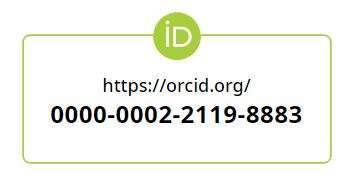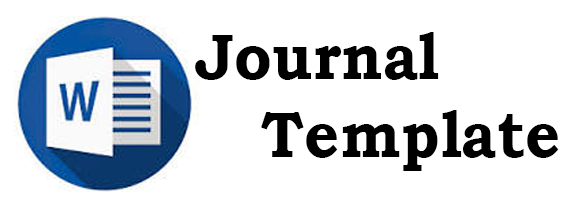Pemanfaatan Botol Bekas Sebagai Wadah Akuaskap Ikan Hias Di Tk Aisyiyah Bustan Athfal Jampue Kabupaten Pinrang
The Utilization of Used Plastics Waste as Ornamental Fish Aquascape Containers in Aisyiyah Bustan Athfal Kindergarten, Jampue, Pinrang District
Abstract
Plastic bottle waste is the result of waste in the form of bottles made of plastic or glass resulting from a production process both industrial and domestic. The existence of this waste is considered to have no economic value and selling value, but to reduce the abundance of plastic waste, especially plastic bottles, there must be innovation that has the purpose of utilization. The concept of using plastic bottle waste as a medium for maintaining ornamental fish is called Aquascape. This activity was carried out in November 2022. One of the methods carried out was by introducing students to recycling plastic bottles and types of ornamental fish. It is hoped that this dedication will reduce the capacity of plastic waste which can reduce the quality of health and the beauty of the environment. The results of collecting used bottles will later be created into an aquascape.
References
Arif A S M, Nusrat S, Uddin D M S, Alam D M T and Mia M R 2018 Hobbyist’s preferences and trends in aquarium fish business at Sylhet Sadar Upazila, Bangladesh Int. J. Fish. Aquat. Stud. 6 392–8.
Asia, & Zainul, M. A. (2017). Dampak Sampah Plastik Bagi Ekosistem Laut. Buletin Matric, 14(1), 44–48.
Mohammad, M.A.B., Abas, S.N., Zakariah, M.I. and Sheriff, S.M., 2021, October. Aquascape ornamental industry in Malaysia: A perspective review. In IOP Conference Series: Earth and Environmental Science (Vol. 860, No. 1, p. 012044). IOP Publishing.
Cracknell, M. White, S. Pahl, W. Nichols, & M. Depledge. (2015). Marine Biota and Psychological Well-Being: A Preliminary Examination of Dose-Response Effects in an Aquarium Setting. Environ. Behav., 48(10):1242- 1269.
Hariyatno, D. Isanawikrama, YJ. Wimpertiwi, Kurniawan. 2018. Membaca Peluang Merakit “Uang” dari Hobi Aquascape. Jurnal Pengabdian dan Kewirausahaan. Vol.2, No. 2: 117-125
Pramadana, M.H., Rivai, M. and Pirngadi, H., 2021. Sistem Kontrol Pencahayaan Matahari pada Aquascape. Jurnal Teknik ITS, 10(1), pp.B15-B21.
Raharjo, S., Kurniawan, E. and Nurcahya, E.D., 2018. Sistem Otomatisasi Fotosintesis Buatan Pada Aquascape Berbasis Arduino. KOMPUTEK, 2(1), pp.39-49.
Williams, S.L., Crafton, R.E., Fontana, R.E., Grosholz, E.D., Pasari, J., Zabin, C., 2012, Aquatic Invasive Species Vector Risk Assessments: A Vector Analysis of the Aquarium and Aquascape (‘Ornamental Species’) Trades in California. Final report. Submitted to the California Ocean Science Trust.
Copyright (c) 2023 Hippocampus: Jurnal Pengabdian Kepada Masyarakat

This work is licensed under a Creative Commons Attribution-ShareAlike 4.0 International License.
Authors submitting manuscripts do so with the understanding that if accepted for publication, the copyright of the article will be given to the Hippocampus. Copyright includes the right to reproduce and transmit articles in all forms and media, including reprints, photographs, microfilm, and other similar reproductions, as well as translations.
The editors of the Hippocampus make every effort to ensure that no false or misleading data, opinions, or statements are published in the journal. However, the content of articles and advertisements published on Hippocampus is the responsibility and responsibility of the authors and advertisers respectively.
Users of this website will be licensed to use the materials from this website in accordance with the Creative Commons International License 4.0 (CC-BY-SA). No fees are charged. Please use the appropriate materials.
Copyright by Hippocampus: Jurnal Pengabdian Kepada Masyarakat uses the latest version of the CC-BY-SA license, which grants the most extensive rights to authors. All articles published by Hippocampus are considered to have been released under the Creative Commons International License 4.0 (CC-BY-SA). These are open access articles distributed under the terms of the Creative Commons International License 4.0 (CC-BY-SA).
Please download the Author's Declaration. The author's declaration form must be completed in relation to the article and signed the original and sent a scanned document file (softcopy) to our email hippocampus@poltesa.ac.id or sent to the Editorial Office in the form of an original hard copy and the article in softcopy form.
Creative Commons License
This work is licensed under the Creative Commons International License 4.0 (CC-BY-SA)

























